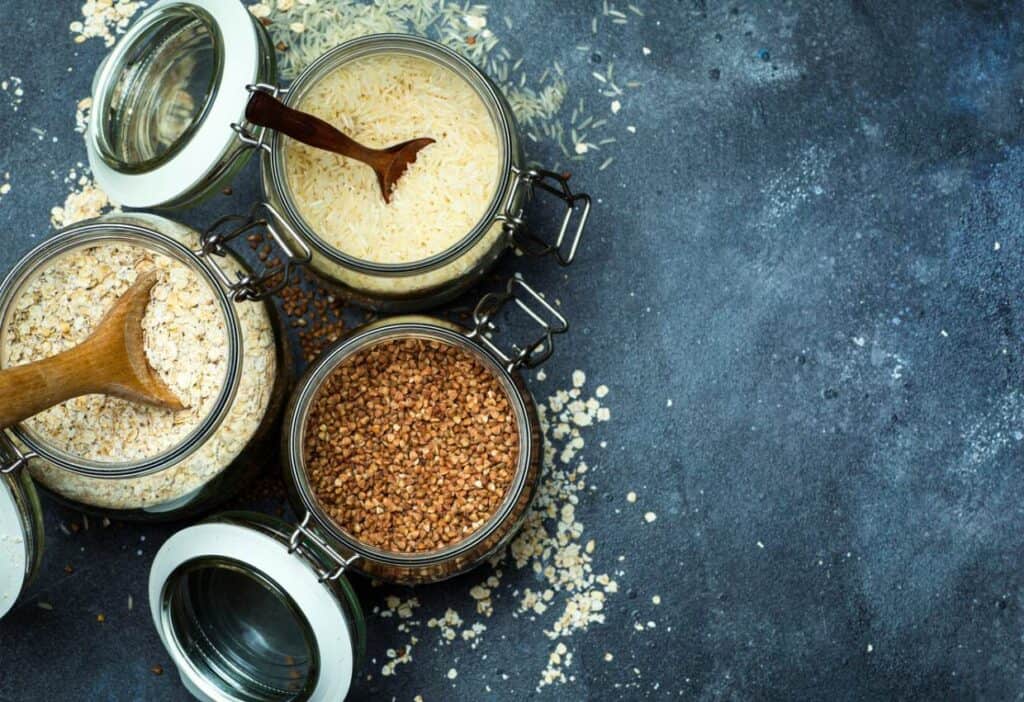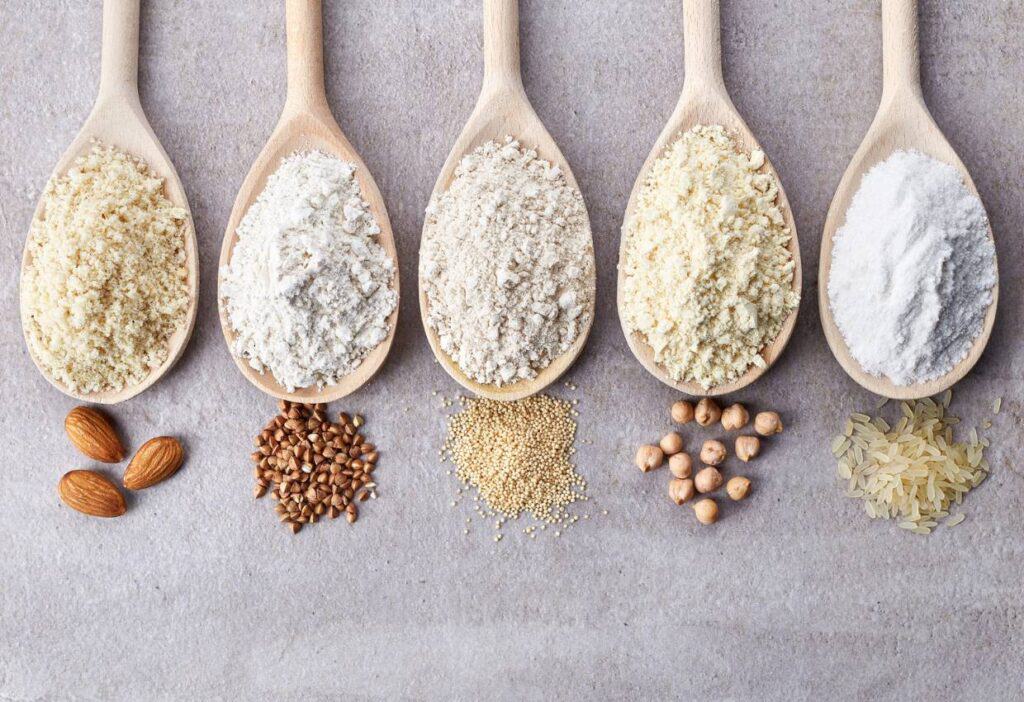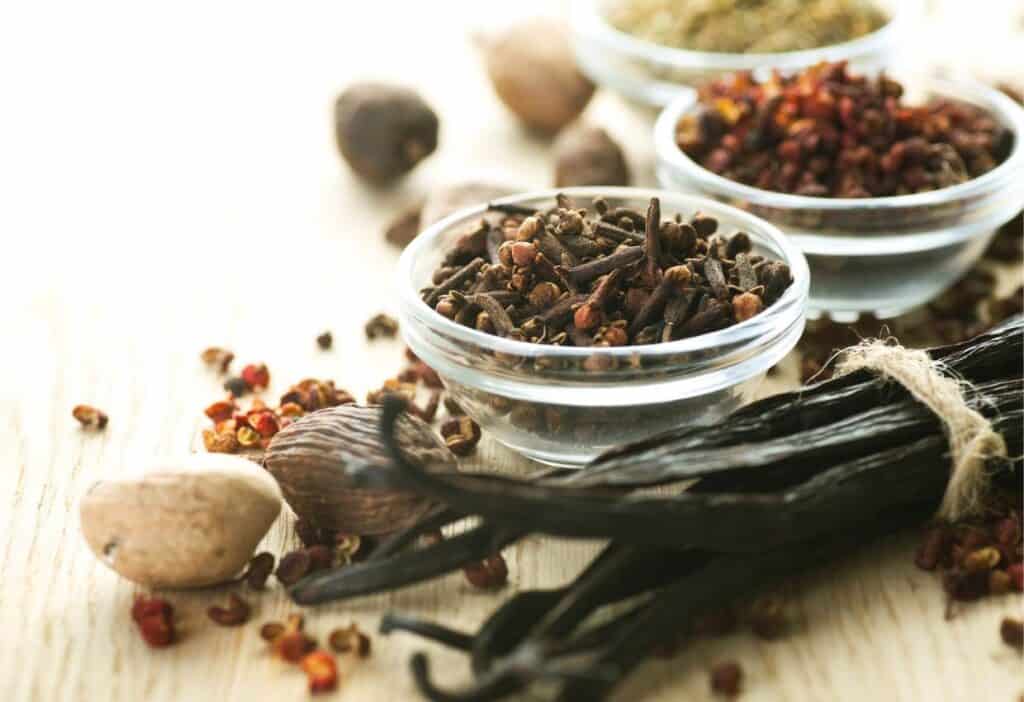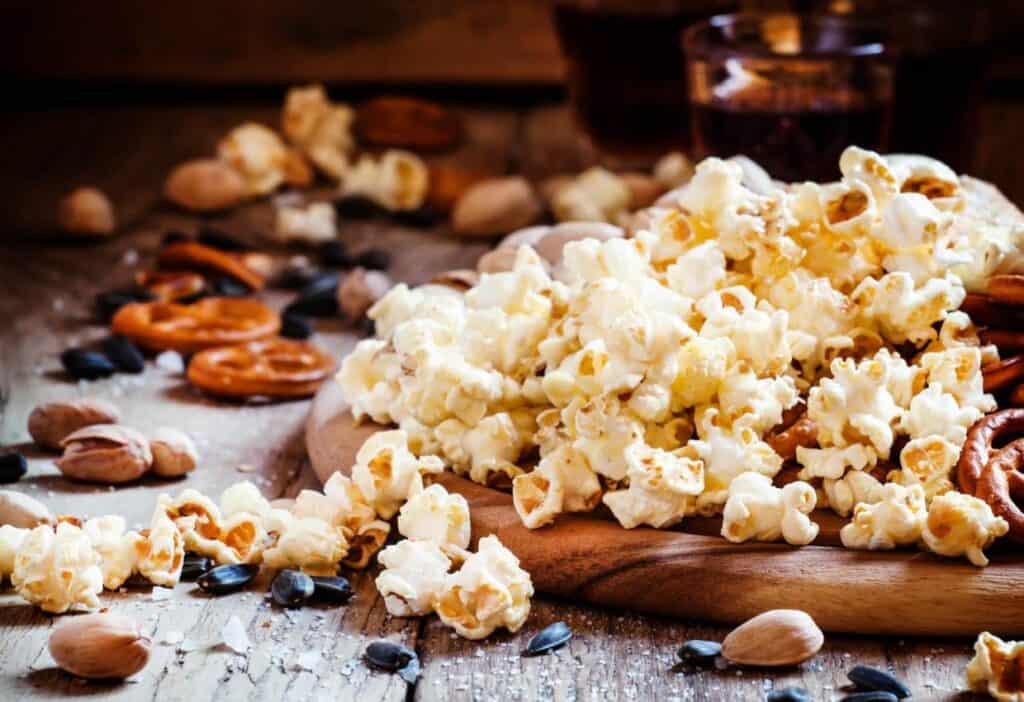Discover the essential items to build a gluten-free pantry and ensure your dietary needs are met with ease.

Many people choose to eliminate gluten from their diets due to gluten sensitivity, celiac disease or other health reasons. Transitioning to a gluten-free diet can be challenging, especially when stocking a pantry with the right ingredients. That’s where these gluten-free pantry essentials come in.
Gluten-free pantry essentials are the ingredients you’ll use repeatedly in your gluten-free cooking and baking, and they can help you achieve the same delicious results as gluten-containing recipes. Some of the most crucial gluten-free pantry essentials include gluten-free flour, such as almond flour, gluten-free grains like quinoa and gluten-free baking ingredients like xanthan gum. With these ingredients, you can easily whip up gluten-free versions of your favorite recipes.
Understanding gluten-free
Gluten is a protein found in wheat, barley and rye. For people with celiac disease or gluten intolerance, consuming gluten can cause an immune response that damages the small intestine. This can lead to various symptoms, including abdominal pain, bloating and nausea.
A gluten-free diet involves avoiding all foods that contain gluten. This includes obvious sources such as bread, pasta and cereal but also less obvious sources such as sauces, dressings and processed foods.
It is important to note that not all gluten-free products are created equal. Some products may be labeled gluten-free but still contain trace amounts of gluten. For this reason, it is crucial to look for products that are certified gluten-free by a reputable organization such as the Gluten Intolerance Group or the Celiac Support Association.
By educating oneself and seeking certified gluten-free products, you can enjoy a wide variety of delicious foods.

Gluten-free grains and flour
When stocking a gluten-free pantry, grains and flour are essential ingredients to have on hand. These pantry staples are versatile and can be used in various dishes, from sweet to savory.
Rice
Rice is a gluten-free grain that is a staple in many kitchens. Brown rice, in particular, is an excellent option for those who want to add more fiber to their diet. It can be used in a variety of dishes, including stir-fries and salads.
Quinoa
Quinoa is a gluten-free grain that is packed with protein and fiber. It has a slightly nutty flavor and can be used in salads, soups and casseroles.
FDL’S 75 Best Bites

Our cookbook with 75 tasty recipes will be your go-to kitchen companion for easy dinners with ad-free recipes right at your fingertips. Crafted by experienced chefs and recipe developers, this collection offers a treasure trove of tried-and-true dishes that make mealtime a breeze.
Get the Recipe: FDL’S 75 Best Bites
Almond flour
Almond flour is a gluten-free flour that is made from ground almonds. It is a great low-carb flour option. It can be used in various baked goods, including cakes and cookies.
Rice flour
Rice flour is a gluten-free flour that is made from ground rice. It can be found in white, sweet and brown rice varieties. Rice flour can be used in baked goods, including bread and pastries.
Oats
Oats are a gluten-free grain that are a great source of fiber. They can be used in a variety of dishes, including oatmeal, granola and baked goods. It can also be ground into oat flour, an excellent gluten-free alternative. It is important to note, however, that oats are more commonly subjected to cross-contamination with gluten, so always ensure you look for the certified gluten-free variety.
Buckwheat
Buckwheat is a gluten-free grain that is packed with protein and fiber. Buckwheat is often made into flour. It has a slightly nutty flavor and can be used in various dishes, including pancakes, waffles and soba noodles.
“A gluten-free pantry staple that I always have is corn tortillas! I buy the extra thin ones because they’re great for air fryer taquitos, gluten-free enchiladas, migas, cinnamon chips, and more. They’re so versatile and easy to cook with.”
— Gena, Ginger Casa

Gluten-free baking and cooking essentials
For gluten-free baking and cooking, it’s crucial to have a well-stocked pantry. Here are some essential ingredients to have on hand:
Baking ingredients
- Gluten-free all-purpose flour: This is a must-have if you don’t want to spend a lot of time and money mixing your own flour blends. All-purpose blends are fantastic for bread, pancakes,
pizza and more.
- Baking powder and baking soda: These leavening agents are essential for giving rise to gluten-free baking. Make sure to check the labels to ensure they are gluten-free.
- Xanthan gum and guar gum: These are used as a binding agent in gluten-free baking, acting as a replacement for gluten itself.
- Vanilla and spices: These are essential for adding flavor to gluten-free baked goods. Make sure to check the labels to ensure they are gluten-free. For instance, some vanilla extract is made with gluten-containing alcohol.
- Chocolate and cocoa powder: These are great for adding a rich, chocolatey flavor to gluten-free baked goods. Check the labels to ensure they are gluten-free.
- Butter and oils: These are needed for most gluten-free baking. Butter and oil add flavor and help keep baked goods moist.
- Salt: This is an essential ingredient for enhancing the flavor of your gluten-free baked goods.
Having a well-stocked gluten-free pantry is essential for successful gluten-free baking.
Cooking ingredients
Here are some of the most essential cooking ingredients for a gluten-free pantry:
- Legumes: Beans, peas and lentils are an excellent source of protein and fiber. They can be used in dishes like salads and soups.
- Vegetables: Fresh or frozen vegetables are important to any gluten-free diet. They can be used in a variety of dishes, including stir-fries and casseroles.
- Starches: Starches such as tapioca starch and arrowroot starch are great to have on hand for thickening sauces, soups and gravies.
- Cheese: Cheese is naturally gluten-free and can be used in a variety of comforting dishes.
- Fruit: Fruits can be easily incorporated into a gluten-free diet. Some great choices include apples, bananas and berries. These can be enjoyed as snacks, added to smoothies or used in baking recipes.
- Noodles and pasta: Many gluten-free noodle and pasta options are available, including quinoa, rice and lentil pasta. These ingredients can be used for anything from spaghetti to gochujang noodles.
- Herbs and spices: Herbs and spices are a great way to add flavor to gluten-free dishes. While most are naturally gluten-free, you want to check the label to ensure cross-contamination isn’t possible.
By keeping these gluten-free cooking essentials in your pantry, you can create a variety of tasty gluten-free meals.
“Gluten-free pasta alternatives are a must in our household. I’m partial to brown rice pasta or the newer lentil and vegetable blends. They’ve come such a long way from corn and rice only options of previous years and make quick and easy dinners a breeze.”
— Gina Matsoukas, Running to the Kitchen

Gluten-free snacks
Regarding snacks, there’s no need to fret, as plenty of gluten-free options are available on the market. Here are some great gluten-free snack ideas:
- Popcorn
- Fruit
- Gluten-free crackers and pretzels
- Nuts and seeds
- Yogurt
- Cheese
- Hard-boiled eggs
- Hummus with veggies
- Gluten-free protein bars
- Roasted chickpeas
Overall, there are plenty of snack options available for a gluten-free pantry. However, it’s important to read labels carefully to ensure they are safe to eat or use in recipes.
Wrapping it up
In conclusion, having a well-stocked gluten-free pantry can make meal planning and prep more manageable and enjoyable. Incorporating these gluten-free pantry staples into your kitchen allows you to create various delicious and nutritious meals without compromising taste or your dietary needs.
Kristen Wood is a photographer, writer and creator of MOON and spoon and yum and Foodventures Abroad. She is also the author of Vegetarian Family Cookbook, Fermented Hot Sauce Cookbook and Hot Sauce Cookbook for Beginners. Her work has been featured in various online and print publications, including Elle, Martha Stewart, Yoga Journal and more.